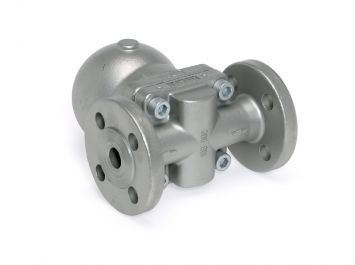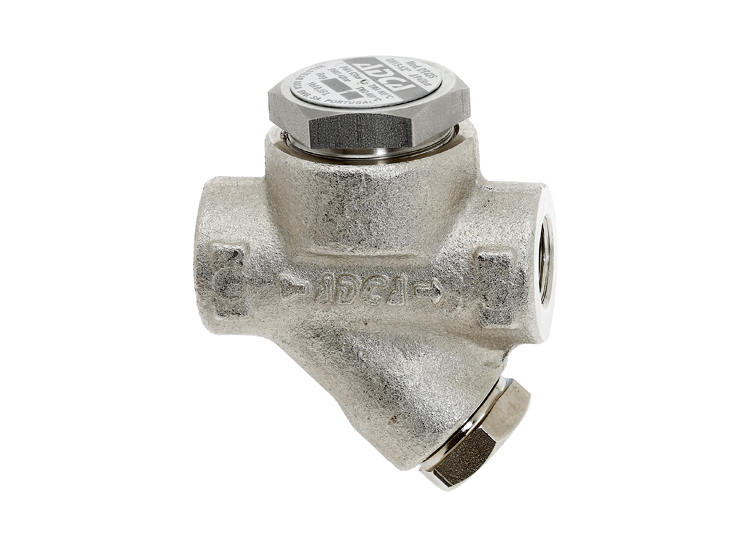
How does a Thermostatic steam trap work?
Steam can be used to power mechanical devices and applications and to do this, it must be trapped. A steam trap is a type of automatic valve that filters out condensed steam and non-condensable gases without wasting any steam.
It purges condensate (various low-density, low-viscosity, liquid hydrocarbons) out of a system. This enables steam to reach its destination as dry as possible, achieving optimal performance in the process.
There are a range of different steam traps on the market, each performing a specialised task:
– Thermodynamic
– Float and thermostatic
– Inverted bucket
– Thermostatic
– Bimetallic
At BM Engineering Supplies, we provide a range of steam equipment that can be used across an array of applications in many different industries. In this article, we’re going to look at the thermodynamic steam trap, understand how it works, what its advantages are and what it can be used for.
How does a Thermodynamic Steam Trap work?
All types of steam trap keep steam trapped in a chamber while extracting the condensate. The condensate loop then feeds into a tank and, from there, the water is either processed and returned to the boiler or it’s cooled and discharged as waste.
Thermodynamic steam traps are unique in that they rely on water and ‘flash steam’ to operate. Flash steam occurs when high pressure condensate is discharged to a lower pressure. Their simplicity, combined with a robust design and production means they are dependable and reliable even at the highest pressures and temperatures.
As the name suggests, thermodynamic steam traps utilise the movement, or indeed, dynamics of water and flash steam in their operation. The simplicity lies in the fact that they have only one moving part; a disc inside the trap that moves up and down to trap the steam.
The process works as follows:
– Incoming pressure to the trap raises a disc above a flat face inside the control chamber of the trap.
– Cool condensate is discharged beneath the disc from an inner ring and out through three outlets.
– Hot condensate flowing into the chamber under the disc drops in pressure and releases flash steam moving at high velocity.
– This creates a low-pressure area under the disc, drawing it back down again.
– Flash steam pressure builds up above the disc and forces it down against the incoming condensate until it seats on both inner and outer rings.
– Now the pressure above the disc matches the pressure being applied to the underside of the disc from the inner ring. The flash steam is trapped in the upper chamber.
– When the flash steam condenses, the pressure in the chamber drops, the disc raises, and the process repeats itself.
Benefits of Thermodynamic Steam Traps
It’s important to choose the right steam trap for the job, and this is dictated by the application it’s required to work in. However, there are some clear advantages to thermodynamic steam traps in industry, including:
– They are lightweight, compact and their simple design makes them easy to test and maintain without removing them from an application.
– Despite their small size, they have an impressive condensate capacity.
– They require no adjusting or replacement of internal parts throughout their life cycle.
– They withstand harsh conditions and aren’t affected by water hammer (otherwise known as hydraulic shock caused by a pressure surge) or vibration.
– Made from stainless steel, they are durable but also highly resistant to corrosion.
– They operate well across a broad temperature range, working in high pressure with superheated steam whilst also resistant to freezing.
What applications are they used in?
Thermodynamic traps are often used as ‘drip traps’ in drip applications that involve removing condensate formed in steam lines when the steam has lost its heat energy. They require minimal condensate capacities and discharge large amounts of air. They are effective here, because thermostatic air vents handle the removal of air from the piping system.
We supply the ADCA UDT46, which is compatible with the CTS4U Compact Trapping Station. It’s made from high-grade stainless steel and features an insulation cover, intermittent discharge capability as well as a replaceable seat and disc. This steam trap is perfect for high pressure systems, including steam tracing applications. It’s particularly suitable for applications where adverse weather conditions may affect operations.
Talk to us
At BM Engineering, we’re the leading UK supplier of valves, actuated packages and instrumentation to the process industries, including the food and beverage industry and the oil and gas industries.
We’re an independent, family-run business that puts customer service at the heart of everything that we do. If you need any support or guidance, we’re here to help you get the right products you need for your industry. We supply some of the biggest names in valve manufacture and our team is always on hand to answer any questions you might have.
Get in touch with us today to see how we can help.



